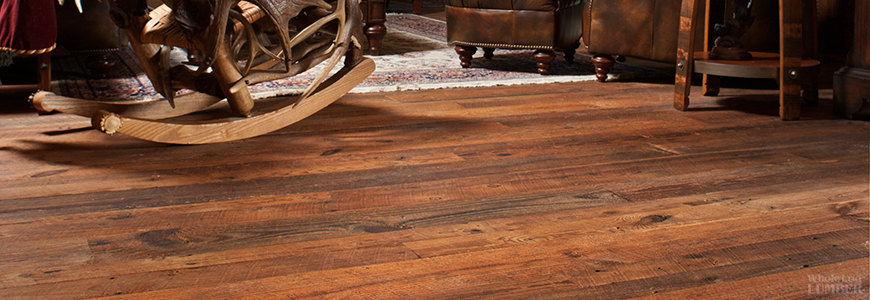
Reclaimed Heart Pine and Heartwood Quick Tips
* A mature tree will produce "heartwood" within its center core, heart pine or not.
* All heartwood has deeper coloration in the rings, but heart pine heartwood has a deep amber color even between the rings.
* Authentic heart pine heartwood is more rot and disease resistant than varieties with more sapwood - which is lighter and more blond in color around the outer edges, or on either side of the rings.
* Tighter or looser growth rings give clues whether a pine is of another Yellow Pine origin or the true heartwood of reclaimed heart pine.
* Pine with 6-8" growth rings per inch and a percentage below 70 percent of red-amber heartwood may be referred to as "new" heart pine. And while it's called new heart pine, it's not true legendary heart pine.
* First generation heart pine had all been cut down by 1900 and were 300-500 years old at that time.
* The "heartwood" inside first generation massive timbers and beams that were the backbones of factories and buildings that built early America, is dense and red-amber colored and can have as many as 25 or more tight growth rings PER INCH!
Heartwood Grades and Saw Cuts = Variety
Because Heart Pine grew large and straight with few knots, the beams and timbers reclaimed for flooring today, can be sawn in 2 ways - either horizontally or vertically.
A horizontal cut is called plain sawn or flat sawn and creates boards with arching, cathedral effects.
A prime cut, sawn vertically, creates a distinctive effect or grade of vertical straight grain lines.
As long as the material is authentic reclaimed heart pine, at least 90 percent of the heartwood on either side of the grain lines or arches, will be amber, rather than lighter yellow sapwood. From either a style or grade ,standpoint, reclaimed heart pine offers unique variety for sophisticated tastes.
Heartwood grows more beautiful with age
And improves the perceived value of its surroundings as well!